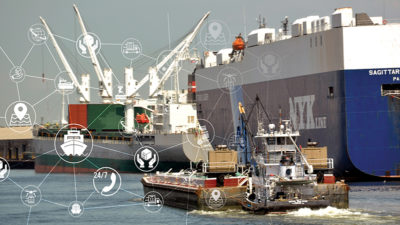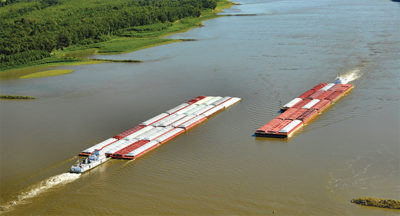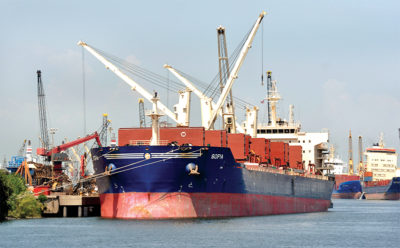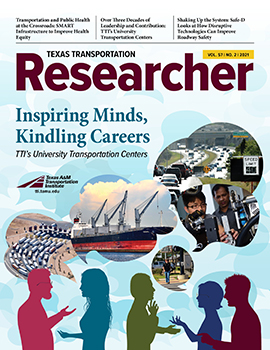Endless waves. Cloud-dotted skies. Foaming wakes left by ships. Along the shore, ports bustle with activity, their efficiency in transporting international trade a key part of the U.S. economy. Intermodal carriers move freight inland from those ports, ultimately to stock store shelves and land on consumer doorsteps.

The Maritime Transportation Research and Education Center (MarTREC) is a U.S. Department of Transportation Tier 1 University Transportation Center funded through the Office of the Assistant Secretary for Research and Technology. Established under the Fixing America’s Surface Transportation Act enacted in 2015, MarTREC works to preserve and support the nation’s transportation system to facilitate efficient, resilient, and sustainable maritime and multimodal logistics and infrastructure. The center’s vision is to be the nation’s premier source of expertise on maritime and multimodal transportation research and education. Led by the University of Arkansas, MarTREC consortium members include the Texas A&M Transportation Institute (TTI), Jackson State University, Louisiana State University, the University of New Orleans and Vanderbilt University.
“For TTI, MarTREC has provided an opportunity to do groundbreaking research related to marine freight transportation,” says TTI Research Scientist Jim Kruse, director of the Institute’s Center for Ports and Waterways. “MarTREC covers a wide variety of research topics related to the marine transportation system, and TTI’s knowledge of that system, combined with extensive capabilities in economics, emissions and big data, enables the Institute to produce analyses beyond the traditional research in this area.”

Last year, TTI researchers and Texas A&M University at Galveston professors completed the MarTREC report Analysis of Blockchain’s Impacts on and Applicability to the Maritime Industry. In maritime terms, the report defines blockchain as a ledger or shared database “that identifies and tracks transactions digitally and shares this information across a distributed network of computers.” Businesses, for example, store and share data in blocks linked together. All users can view and control the data, thereby encouraging transparency and efficiency. The research team reviewed literature; completed a case study of the Port of Veracruz, Mexico; and conducted a survey in the greater Port Houston area.
“The report offers a comprehensive look at the potential uses of blockchain technology in the maritime industry,” notes Juan Carlos Villa, who heads TTI’s Mexico City Office. “The report’s proof of concept at the Port of Veracruz and extensive survey of the Port Houston community provide a solid foundation for future research on this topic.”
The literature review and survey responses indicated stakeholder concerns about how (and if) blockchains would meet maritime needs, providing an opportunity for development, education and research in that area.

“The survey shows that the majority of the industry [around 87 percent] is not in the process of implementing blockchain,” says Joan Mileski, head of the Maritime Business Administration Department at Texas A&M University at Galveston. “But the industry is slowly evaluating blockchain as a tool used at ports to efficiently move goods through the U.S. Customs and Border Protection inspections and into the supply chain process.”
The report was presented at Poster Session 1161 — Current Research Related to Ports and Channels at the 2021 Transportation Research Board Annual Meeting. Besides contributing to discussions on this emerging topic, the findings can also support policy-maker decision making related to ports and shipping. On the water or in the office, industry personnel can incorporate the best practices identified by Kruse and his team to optimize daily operations.
“The results of our study with TTI indicate that despite major investments by leaders in the industry, blockchain is still in its infancy related to maritime business,” notes Cassia Galvao, assistant professor in the Texas A&M University at Galveston’s Maritime Business Administration Department. “However, like the Internet in its early days, blockchain has the potential to transform the reality of how maritime business is done. It’ll be an evolving process for the next 5 to 10 years — but worth it.”

